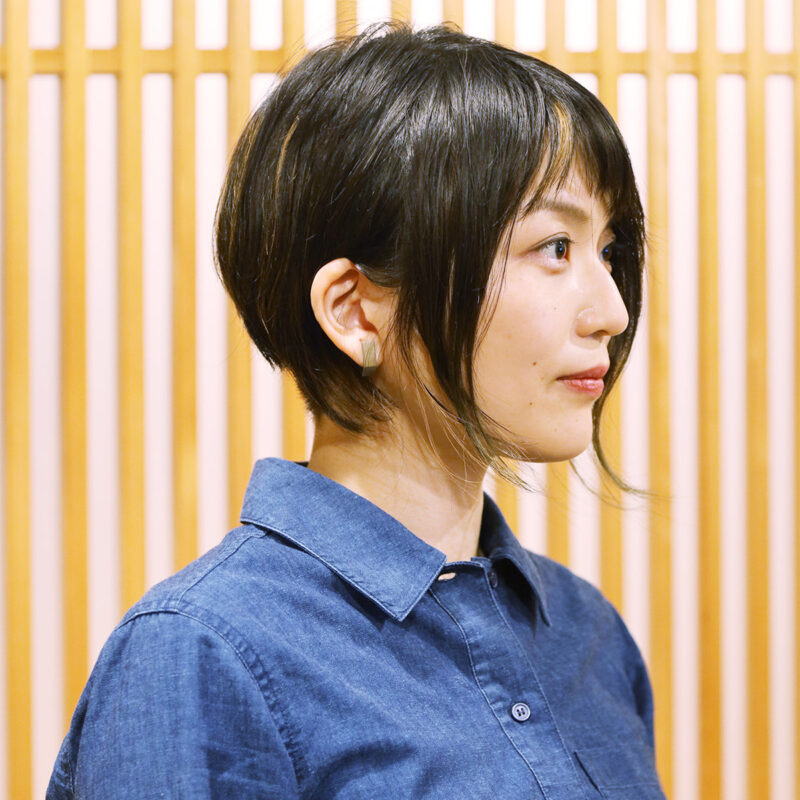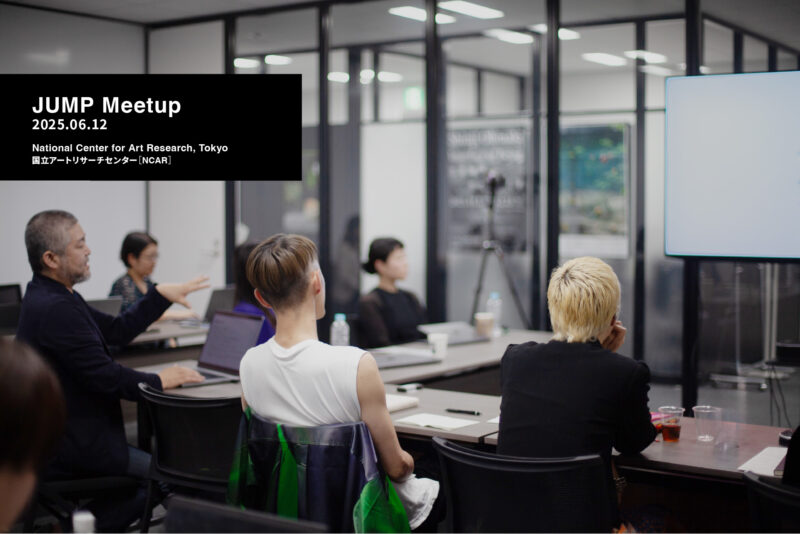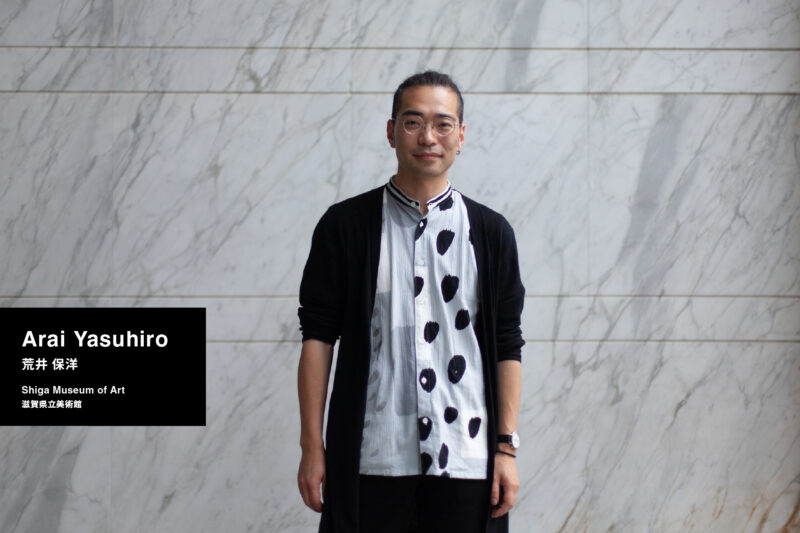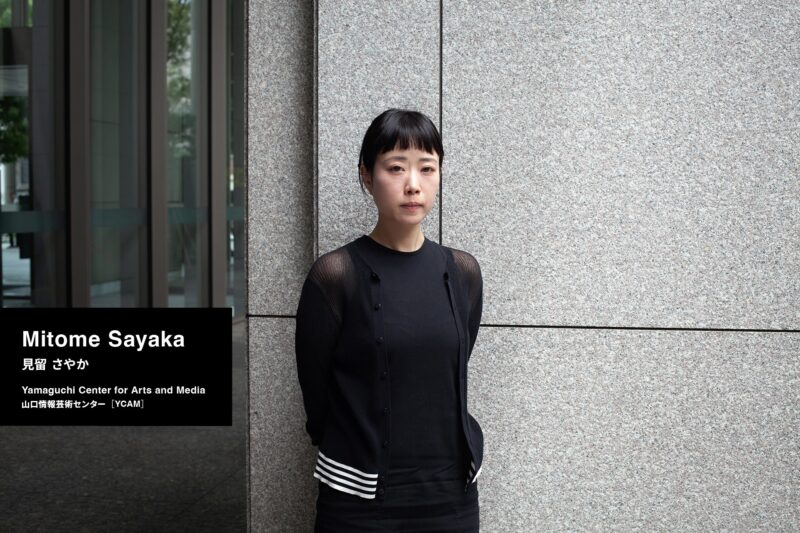Note 1. “The best exhibitions from twenty years selected by Tsukamoto Mari. What were the most memorable exhibitions from 2004 to 2024?” Tokyo Art Beat 20th Anniversary Special Feature (published in Tokyo Art Beat on July 7, 2024, Japanese)
https://www.tokyoartbeat.com/articles/-/20th-tab-mari-tsukamoto-202407Stories of Collaboration
Tsukamoto Mari: Curation as Preservation
Tsukamoto Mari, Curator, The Museum of Art, Kochi
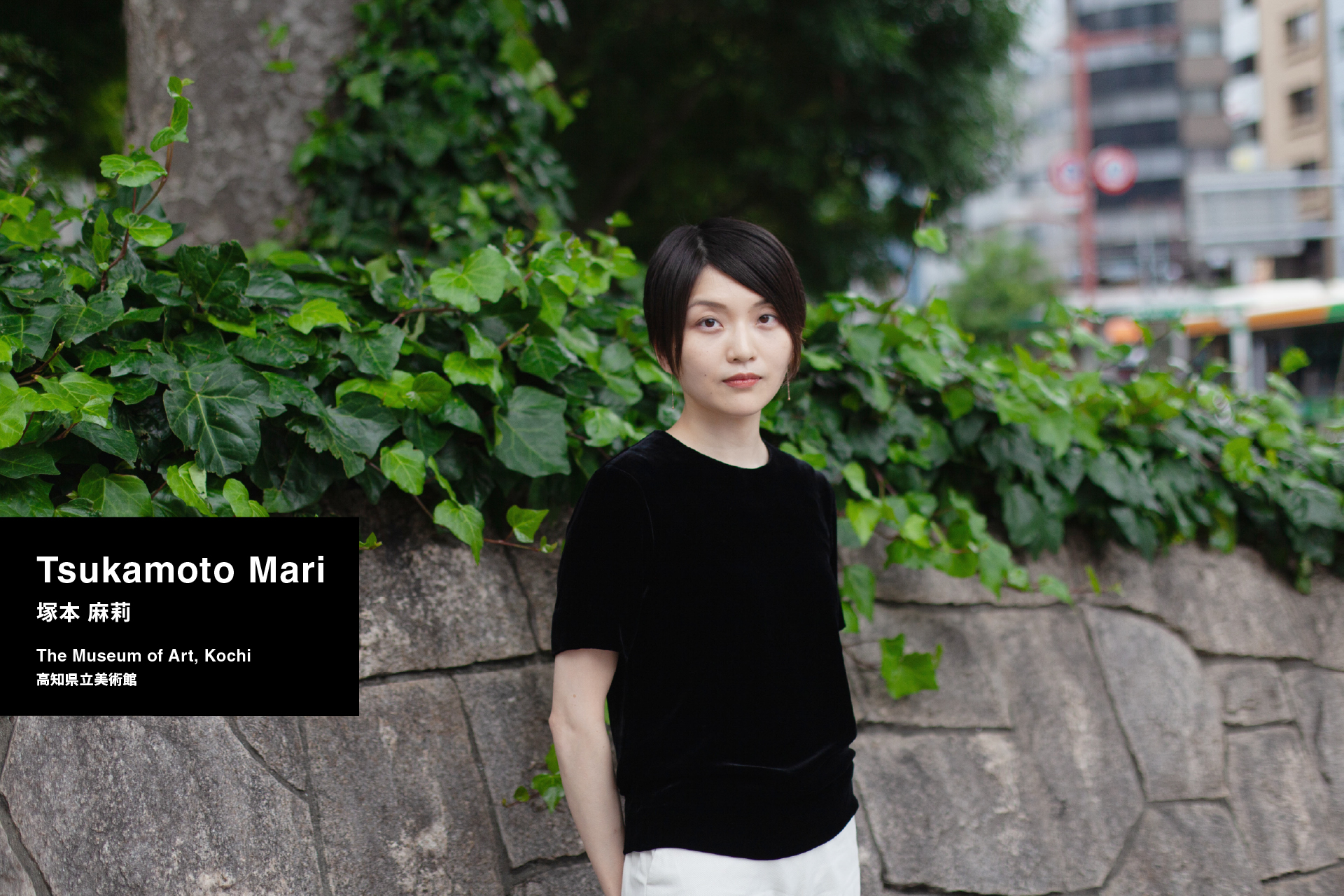 2025.10.29
2025.10.29
Within contemporary art, there are many different vocations. Beyond the artists and curators whose names are prominently displayed, the world of contemporary art is supported by the work of many people, including those who set up exhibitions and those who transport works of art.
Inspired by a book that she picked up at her high school library, Tsukamoto Mari, a curator at The Museum of Art, Kochi, decided to study art restoration and attended art school. Years later, she is now a curator of contemporary art who is planning an exhibition at the Museum of Contemporary Art, Los Angeles (MOCA) along with the artist duo MES (Arai Takeru and Tanikawa Kanae). So what kind of transformation happened along the way? Tracing her career, we can see that her passion as a curator lies in preserving works for the future.
Interview and writing by: Hagiwara Yuta; Photos by: Nakata Emi; Edited by: Kawamura Yoko
Student days immersed in conservation
Before you became a curator, you intended to become a conservator. What made you become interested in art restoration?
Tsukamoto: I had always loved drawing and painting, but about the time that I was in high school I felt that maybe I had reached my limits, and I couldn't keep painting forever. At school, I enjoyed not only art but also history, and that was another factor. I was wondering if there was a career that would allow me to take advantage of both of my interests—art and history—when I happened to come across a book about the restoration of the Sistine Chapel in my high school library. This is how I became interested in the job of a restorer and went to Aichi University of the Arts.
During my undergraduate years, I studied the painting techniques of Rembrandt van Rijn (the seventeenth century Dutch painter). After that I went to the Tokyo University of the Arts, where I studied cultural property preservation as a graduate student, spending two years solely focused on restoring oil paintings. There were countless artworks waiting to be restored, such as self-portraits painted by graduates of the university that were in the collection of the University Art Museum and paintings from art museums around the country, and I spent my days restoring them under guidance of my professors. When it comes to restoring paintings, you have to learn the basics by working with your hands. At the time, I was so busy working that I didn’t even have any time to go to art museums.
Artworks are not only the product of the artists who created them; they also represent the accumulated efforts of the many people who preserve them for future generations. Restoration brought me joy because it allowed me to realize that I was one of these people.
When you were immersed in restoration, how did you see the world of contemporary art?
Tsukamoto: I had friends who aspired to be artists, so I had some interest. But they were all extremely learned, and when I listened to the artists talking I didn't really understand what they were saying. I didn't understand how to take in an artwork or how to look at it. Although I was interested, I had the impression that it was something far removed from my existence. I never thought that I would end up working in contemporary art after graduation.
A frantic accumulation of experience
So what led to you to work in contemporary art?
Tsukamoto: I can only say that this is how things turned out [smiles wryly]. After I finished graduate school I wanted to find work as a conservator, but the reality was that this was hard. So I got a job at an art auction house in Tokyo and worked there for two years. I enjoyed writing descriptions of the pieces, and being in an environment where I could look at not only oil paintings, but works from a variety of genres, like Japanese paintings and ceramics. But I came to realize that I wasn't suited to the commercial world. I applied for a curator position that happened to be available at The Museum of Art, Kochi and I was offered the role.
So you started handling contemporary art after you began working at The Museum of Art, Kochi?
Tsukamoto: Yes. I didn't become a curator because of a particularly strong desire to take on that role, it’s more that I got here by following a path where it led me. I concentrated on going to museums to see exhibitions and piling up experience in the field, and I somehow managed to learn the job of a curator.
The first exhibition that I was involved in as a curator was Takahashi Collection: Mindfulness 2016. This was an exhibition of the collection assembled by Takahashi Ryutaro, the psychiatrist who is one of Japan's leading contemporary art collectors. In my role assisting the main curator, I learned how to create an exhibition.
I was particularly impressed by the process of installing the works. When arranging the works in a venue, if a work with a delicate texture is placed next to a work with a strong impact it will be overwhelmed, so the impression of a work can change depending on how it’s placed. I learned how to create a sense of cohesiveness by arranging works according to the characteristics of the pieces. I was frantic at the time, but in retrospect I feel that this was the first step in my journey to learn about curation.
Was there a particular moment when you felt that you could stand on your own feet as a curator?
Tsukamoto: I think that it was when I first used the title of “curator.” In Susaki City (Kochi Prefecture), there is an artist-in-residence program called “Contemporary tales from the province.” Takezaki Kazuyuki, a painter originally from Susaki City who died last year, was one of the founding members of this project. For the fifth edition of the artist-in-residence program in 2018, he asked me to plan a group exhibition of local artists separate from the exhibition for the resident artists.
This was the first time that I used the “curator” title, and I worked alongside the artists as they created their works, communicating with them and writing explanatory text. Through this experience I had the feeling that this is how exhibitions should be created.
Your profile says that you put the artists’ practices in a local context to share them with the world, but this refers specifically to what sorts of practices?
Tsukamoto: ARTIST FOCUS #01 Kazuyuki Takezaki: A Sunny Day After Rain, an exhibition shown at The Museum of Art, Kochi in 2020 might be a good example of this. This exhibition was the first contemporary art exhibition that I organized myself at The Museum of Art, Kochi, and it was part of a series that features artists with ties to Kochi that continues today. The first of the series was a solo exhibition of works by Takezaki, who I've already mentioned. The artist's practice and the exhibition space meshed together to create an exhibition that could only be held at that place and time. It gave me a deep sense of accomplishment.
Regarding this exhibition, you’ve written that you won’t ever forget the experience of seeing the artist’s style evolving, and that it gave you great joy as a curator (Note 1). This is a joy that can’t be experienced through restoration work, right?
Tsukamoto: Correct. Takezaki’s style changed in the course of preparing for the exhibition, and I feel that this ultimately led to him taking a leap forward as an artist. I felt so happy and proud that I was able to witness this moment of change.


ARTIST FOCUS #01 Kazuyuki Takezaki: A Sunny Day After Rain, The Museum of Art, Kochi, 2020
Photo: Tanaka Kazuhito
In recent years, you’ve been noticeably active outside of Kochi. For example, you organized Yuki Harada Solo Exhibition: Go stay go pakiki all da time! Eh… no give up ’til you pau! at the Museum of Japanese Emigration to Hawaii located in Suo Oshima, Yamaguchi Prefecture (2023).
Tsukamoto: If the timing with an artist lines up, I will sometimes organize an exhibition on my own, rather than as part of my job at The Museum of Art, Kochi. I organized the Harada exhibition independently along with the artist. This was a rare exhibition of Harada’s Shadowing series, which is based on the theme of immigrants to Hawaii. It was presented at a museum in Suo Oshima in Yamaguchi Prefecture, an area which had sent many people to Hawaii. After the exhibition ended, the work was added to the museum’s collection and put on permanent display.
The purpose of each exhibition is different, but I want to bring the work of artists into the world to create a legacy. In experiencing the process of creating exhibitions alongside the artists, I’d like to preserve something for future generations.
As someone who’s dedicated to restoration and understands the value of passing on art to the next generation, you may have a unique sense of what it means to “preserve” something.
Tsukamoto: I suppose so. Of course, the objective isn’t just to preserve the works, it’s also to share them and have people enjoy them. However, rather than being satisfied with simply sharing the works, I want to turn my own thoughts into writings and catalogues and leave these behind along with the artists’ oeuvres.

Yuki Harada Solo Exhibition: Go stay go pakiki all da time! Eh… no give up ’til you pau!, Museum of Japanese Emigration to Hawaii, 2023
Photo: Matsumi Takuya
The challenge of performance art
As part of the JUMP program, you are slated to create an exhibition at The Museum of Contemporary Art, Los Angeles (MOCA) along with MES. Why did you choose to collaborate with them?
Tsukamoto: First of all, the exhibition will be held in the Geffen Contemporary, a building that is separate from the main MOCA building. The main building is a white cube that looks like an art museum, while the Geffen is a renovated police car warehouse. It is much deeper and has higher ceilings than a typical Japanese museum.
A curator there suggested that if we are going to use the Geffen, performance art would be better than paintings or an installation. However, my strengths lie in physical works like paintings and sculptures, and I have hardly ever been involved in organizing works of performance art. Choosing an artist was also less than straightforward, and it took a fair amount of time to sort that out.
To be sure, the syntax required when exhibiting works is a lot different from that used when staging a performance.
Tsukamoto: I contacted MES after seeing the video of their work WAX P-L/R-A/E-Y. In the video of the performance, candles affixed to a performer’s fingertips are lit and the wax drips down their hand. Just watching it makes your body tingle with pain. I also thought that it had a vivid spirit of critique towards an age in which war is no longer a figment of the imagination.
Moreover, MES can be expected to produce not only performance art, but also a work that occupies space and can be deployed as an installation. My thinking was that the performance art and the installation that they create might be well-received by audiences in Los Angeles.
The art of MES is simpatico with the worlds of club culture, fashion, and activism, so it should be able to reach audiences outside of the world of contemporary art. At present, what kind of art are you planning to create with MES?
Tsukamoto: MES has cast its attention on Kotoku Shusui, an anarchist and thinker from Kochi Prefecture. Kotoku was executed in connection with the High Treason Incident (Note 2), and even though I live in Kochi, I hadn't had much opportunity to explore his story. I was surprised that MES had fixed on such an interesting person.
The current situation in the US is another factor that may influence the duo’s work. Since the beginning of the second Trump administration, society as a whole has been dramatically shaken by events including the enforcement of hardline policies against immigrants. I expect a duo like MES to be able to physically capture these political developments and create a work from the output.
Note 2. In 1910 hundreds of socialists and anarchists were rounded up and arrested for plotting the assassination of Emperor Meiji. Twelve people, including Kotoku, were executed, but the case was later said to be largely fabricated by the government.
A thread that connects Los Angeles and Kochi
What kind of research is involved in the creation of the art?
Tsukamoto: In May 2025, the MES duo visited Kochi and toured The Museum of Art, Kochi, where they viewed works by Kotoku Shusui’s nephew, Kotoku Yukie. They also visited the Kochi Liberty and People's Rights Museum and Kotoku’s grave in his hometown of Shimanto City, where they paid their respects. MES discovered by chance that the owner of a bar they visited in Kochi City was a distant relative of Kotoku, and the owner surprised them by showing them a family tree.
Further research was conducted in Los Angeles over a ten-day period in June. The first place we visited was the Geffen Contemporary. When we actually visited, it was an enormous space without any walls, and I could understand why the curator there had said that it wasn’t ideal for ordinary exhibitions. On the other hand, lighting and other equipment can be arranged flexibly, so the space is ideal for performances.
We also visited the Manzanar concentration camp, one of the internment camps for Japanese Americans during World War II. For me, this visit was the most powerful experience of the trip. This concentration camp that once held more than 10,000 Japanese Americans was built in the middle of the desert, several hours' drive from Los Angeles. Actually visiting this concentration camp allowed me to see the scale of it for myself. It was nearly the size of a town. The racist policies of that time overlap with America's current policies toward immigrants. As we forge ahead, this perspective may be woven into the exhibition as a thread that connects Los Angeles and Kochi.

Shimanto City Library, Kotoku Shusui archives
Photo: Tsukamoto Mari

Meeting at the Geffen Contemporary
Photo: Handa Juri (National Center for Art Research)
What kind of audience would you like to see in Los Angeles?
Tsukamoto: There are a number of communities in Los Angeles with ties to Japan. The Geffen is located near to Little Tokyo, so I hope that Japanese Americans and Japanese people living in the area will feel something when they see the exhibition.
Besides Japanese Americans, Los Angeles is home to many people who have crossed oceans to settle there, so people have much more diverse backgrounds than the people in Japan. Going forward, I think that something we will have to consider is how to make the art resonate with the people of this place.
Performance art takes something that everyone has—a body—and uses it as the medium. Perhaps because of this, this exhibition might be something that will be enjoyed by people of all sorts of backgrounds. On a different subject, what sort of advice did the JUMP mentors give you about preparing for the Los Angeles exhibition?
Tsukamoto: Yasuda Atsuo, Director of The Museum of Art, Kochi, advised me not to “run away” when I was discussing artist selection with the Los Angeles team. There is a language barrier, and when the other side took a strong position on something, I was tempted to just acquiesce. But instead of backing down, we must firmly assert our own needs to create an exhibition on equal footing. Having that mindset was very important advice for me.
I’ve also received some advice from Kataoka Mami, head of the National Center for Arts Research. Kataoka-san gives me concrete advice based on her own experiences, like “If you choose that option, these could be the risks over the long term,” and I’ll rely on this when I'm unsure of a decision.
What kind of experiences do you want to collect through JUMP going forward?
Tsukamoto: This is my first attempt at collaborating with a performance artist. I’m excited to see what I can learn from this. Performance art is something that’s powerful in the moment, so it’s the opposite of the idea of leaving something behind. I’d like to think about how it can be preserved.
In organizing an exhibition on an international stage, I’m curious about what sorts of differences there will be compared to mounting an exhibition in Japan. After the run in Los Angeles ends, the exhibition is slated to be shown at The Museum of Art, Kochi. I’m sure that the audience reactions will be completely different in Los Angeles and Kochi. I’m looking forward to seeing how the reactions differ, and how this will be interpreted.
August 22, 2025
Tsukamoto Mari
Curator, The Museum of Art, KochiBorn in Osaka in 1989, Tsukamoto is based in Kochi.
She completed a master’s program in conservation at the Tokyo University of the Arts, Faculty of Fine Arts in 2014 and has been in her current position since 2016.
With her knowledge of conservation and restoration, she looks at the question of what we should be sure to preserve, and in her curation practice she strives to make the most of the regional and other characteristics of specific exhibition venues.
With a focus on “expression that can only emerge from this place” in light of the history and culture of the exhibition location, Tsukamoto puts the artists’ practices in a local context, sharing this with the world.
